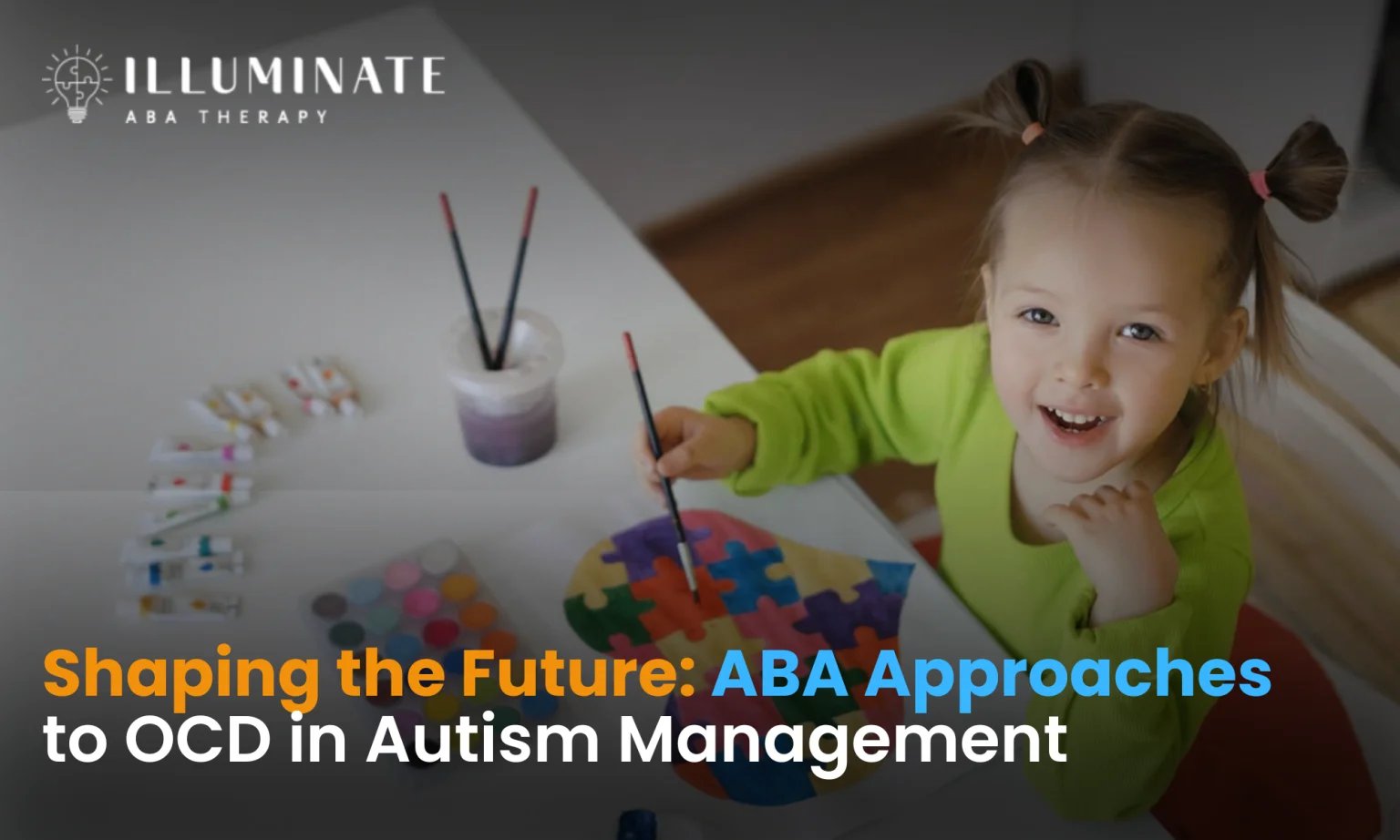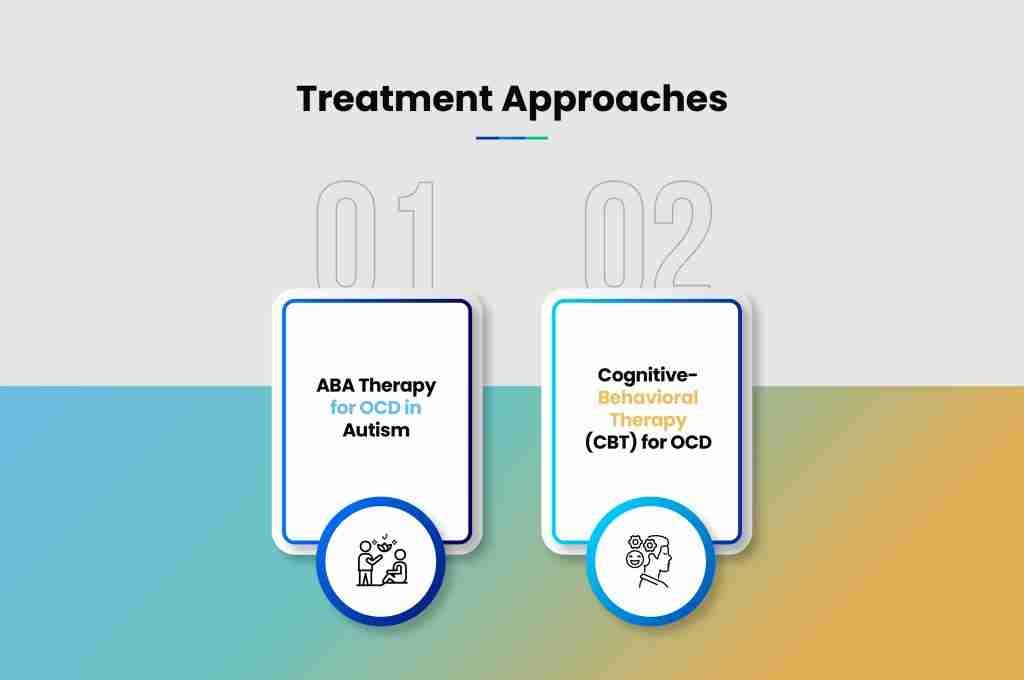Shaping the Future: ABA Approaches to OCD in Autism Management
ABA TherapyJuly 17, 2025

Understanding OCD and Autism
Taking a peek into how Obsessive-Compulsive Disorder (OCD) and Autism Spectrum Disorder (ASD) are connected can be quite enlightening. Studies show that a good chunk of folks with ASD—anywhere from 4% to 17.4%—also meet the criteria for OCD. This is way higher than what you'd see in the general crowd. This overlap is a growing concern, which makes it super important to address both conditions with special attention.
Overview of OCD and Autism Relationship
Genes have their say in the way OCD and autism show up together. Research tells us that if you have OCD, the chance of being diagnosed with autism is higher than average. Flip the coin, and folks diagnosed first with autism have double the gambling odds of later being tagged with OCD. This back-and-forth link makes managing these intertwined conditions pretty tricky, and it begs for personalized treatment plans for each individual.
Co-Occurrence and Impact
Living with OCD symptoms on top of autism can make life even harder for some folks. Those with OCD can show repetitive actions and bothersome thoughts, adding to the already complex characteristics of autism. This combo calls for approaches that focus on both the autism basics and the specific hurdles that OCD throws in the mix.
Grasping how OCD and autism interact is a stepping stone in creating all-encompassing treatment plans. When caregivers, teachers, and pros recognize both the singular and combined effects of these conditions, they can better support folks with both diagnoses.
For a closer look at related ideas and tips in Applied Behavior Analysis (ABA) therapy, dive into our guide on understanding functional behavior assessments (FBAs): a comprehensive guide and get the scoop on crisis management with crisis intervention strategies in ABA: supporting families in emergencies.
Diagnosing OCD in Autistic Individuals
When figuring out if someone with autism has Obsessive-Compulsive Disorder (OCD), it's not always a walk in the park. You got your communication hurdles and the mix of other mental health conditions which make things a little tricky.
Challenges in Assessment
Checking for OCD in autistic folks isn't as simple as pie, thanks to a few roadblocks. Take the Yale-Brown Obsessive-Compulsive Scale (Y-BOCS) – it's like trying to play a video game with a controller that wasn't exactly made for this type of gamer. So, it's better for docs to use tools created with autistic people in mind, making sure they can really get to the heart of the matter. A mix of doctor's observations, test results, and a good old chat about the person's life is how they get the full picture here.
Communication and Co-Occurring Conditions
Talking and understanding – two big things that can be a bit dicey for autistic people, and it's a big hurdle in spotting OCD. They might not be able to tell you what's going on clearly. Plus, throw in a cocktail of other issues like depression, anxiety, ADHD, Tourette syndrome, or various thought disorders, and you've got a diagnostic soup that's kind of hard to untangle. That all means you need to look at everything going on to get a clear view of things.
OCD's a little more common in people with autism than you might think. So, doctors are on the lookout for signs of autism when they're working with someone who has OCD, especially if there are concerns about the way they interact, communicate, or their rigidity in behavior (International OCD Foundation). The unique way these conditions show up means you need a diagnostic comb that's fine enough to catch what's really happening, ensuring effective treatment strategies.
When figuring out the OCD situation in autistic folks, therapists need to sort through communication twists and the confusion of other conditions to get an evaluation that's spot-on and suits each person's specific needs. Using gear that's meant for this crowd improves the chances of hitting the nail on the head with a diagnosis, opening up pathways to interventions that help manage OCD better when autism's in the mix.
Treatment Approaches

When digging into how to help folks with both autism and OCD, two big names pop up: ABA Therapy and Cognitive-Behavioral Therapy (CBT). These methods are both known to make headway in supporting individuals by focusing on what they really need.
ABA Therapy for OCD in Autism
ABA Therapy, or Applied Behavior Analysis, is like finding the switches and knobs affecting behavior and giving them a good twist to make things better. It's a bit of a detective job where you figure out what's going on around a child that sets off their behavior. By beefing up the good stuff, like positive actions, ABA works wonders in helping kids with autism learn new skills.
Today's ABA isn't just the old-school style of focusing on stopping unwanted actions. It's about seeing what the child does well and using that as a springboard for learning, in a way that's way more fun and actively involving them. It's like a play date that sneaks in lessons to use in the real world.
The magic of ABA is in tweaking little things in the kid's environment to help them blossom into confident, independent individuals—all while making sure their true selves shine through. Worth noting, the grueling, old-school ABA method, Discrete Trial Training (DTT), which wasn't exactly gentle or nurturing, is miles away from how it's done now (Child Mind Institute).
Cognitive-Behavioral Therapy (CBT) for OCD
Next up, CBT takes the stage, dealing with OCD by nudging those pesky thoughts and behaviors out of the way. This type of therapy is like having a friendly guide who helps one spot and stand up to the troublesome thoughts leading to compulsions, which can give them the confidence to manage these issues (Child Mind Institute).
In autism, CBT doles out structured sessions where individuals learn about the link between their thoughts and actions. It helps them see what's going on upstairs when things get challenging. By gently remodeling how they think and behave, CBT gives them the reins to control OCD symptoms and leads to a happier life.
Mixing ABA and CBT is like putting two strong forces together, giving a complete support system for those tackling OCD alongside autism. With these well-researched techniques in action, individuals get what they need to confidently handle OCD, and life gets a whole lot easier.
Comprehensive Treatment Strategies
Tackling OCD in folks with autism needs more than just a cookie-cutter solution; it's all about finding the right mix to make their lives easier and more fulfilling. Dive into these two main aspects of treatment: mixing meds with ABA therapy and adding a dash of Occupational Therapy (OT) for tackling those persistent OCD quirks.
Medication and ABA Therapy Integration
Medications like selective serotonin reuptake inhibitors (SSRIs) often get a thumbs-up for helping with anxiety and those nagging thoughts in people with OCD, autism included. But when you pair them with ABA therapy, which is all about using reinforcement to change behavior, magic starts to happen. ABA therapy zeroes in on OCD-related behaviors, teaching folks to spot what gets them going, come up with coping plans, and find better ways of doing things. Mixing meds and ABA creates a multi-layer approach that covers both the mind and behavior, making it a bit easier for someone with autism and OCD to catch a break.
Occupational Therapy for OCD Symptom Management
Occupational Therapy (OT) steps up to the plate by focusing on making daily life a little better for those wrestling with OCD. For folks with autism, it's not just about rituals—sometimes, their senses are on overdrive, adding fuel to the OCD fire. OT dives into teaching them to handle sensory overload, respond better to triggers, and find their groove in everyday tasks. Using sensory-focused strategies and tweaking the environment, OT helps people regulate their senses, making life that much smoother and more balanced.
By blending meds with ABA and throwing OT into the mix, you get a full-on support plan fine-tuned to the individual. This approach not only looks at what's going on behaviorally and cognitively but also takes sensory experiences into account, helping people with autism and OCD carve out a life that's both happy and meaningful.
Get More Insights On: Thriving with Telehealth: Advancing ABA Therapy Techniques


